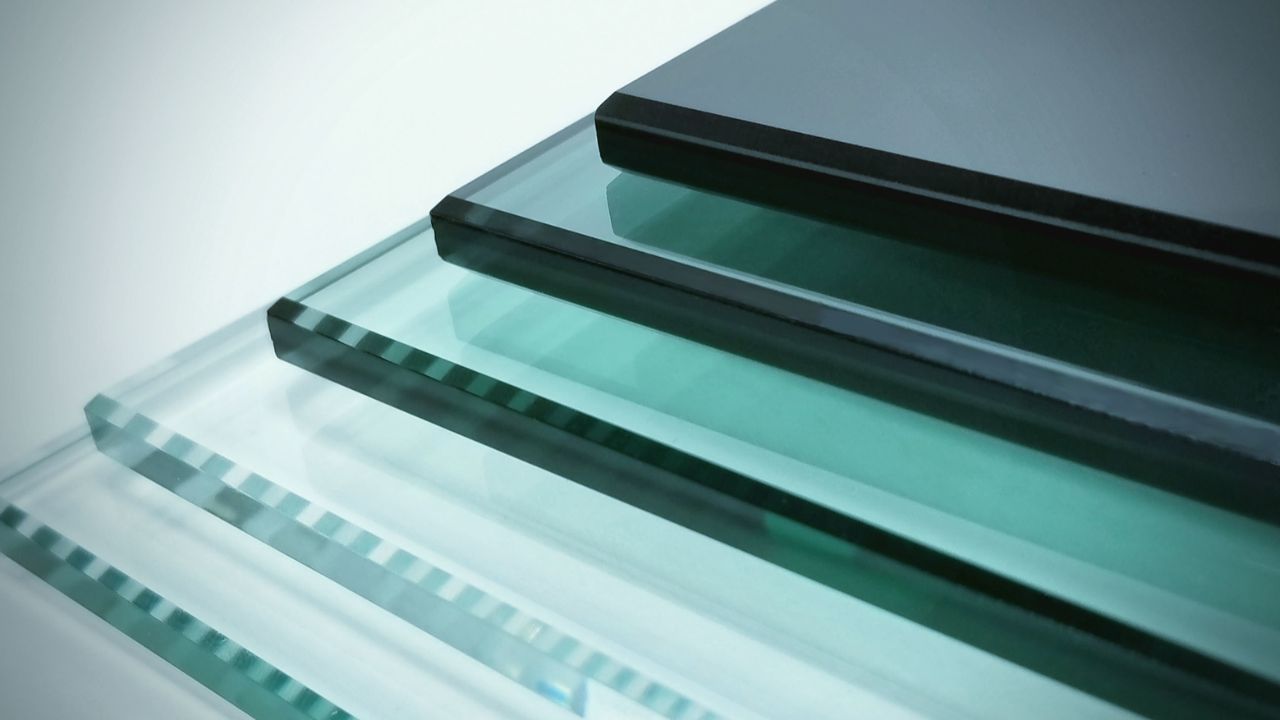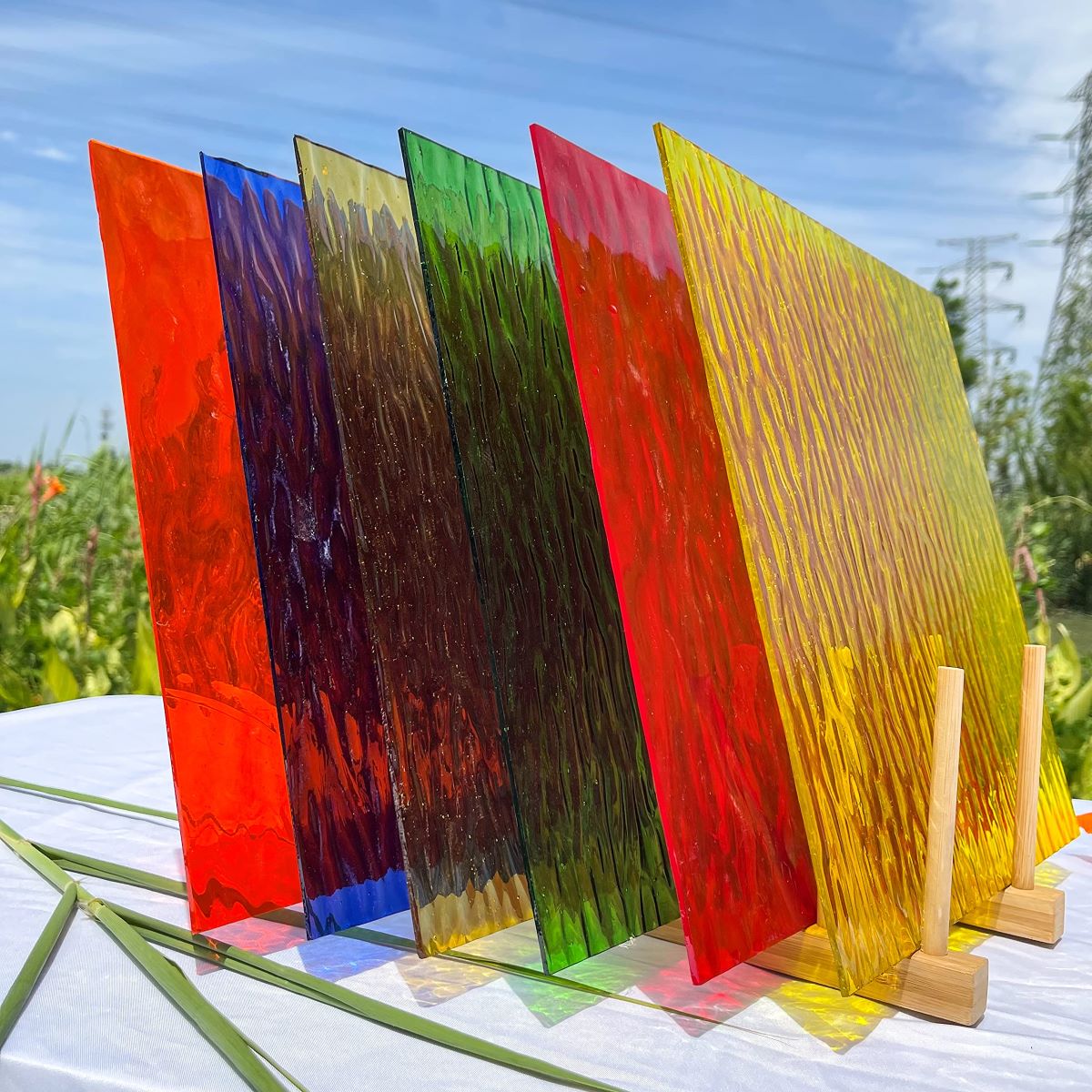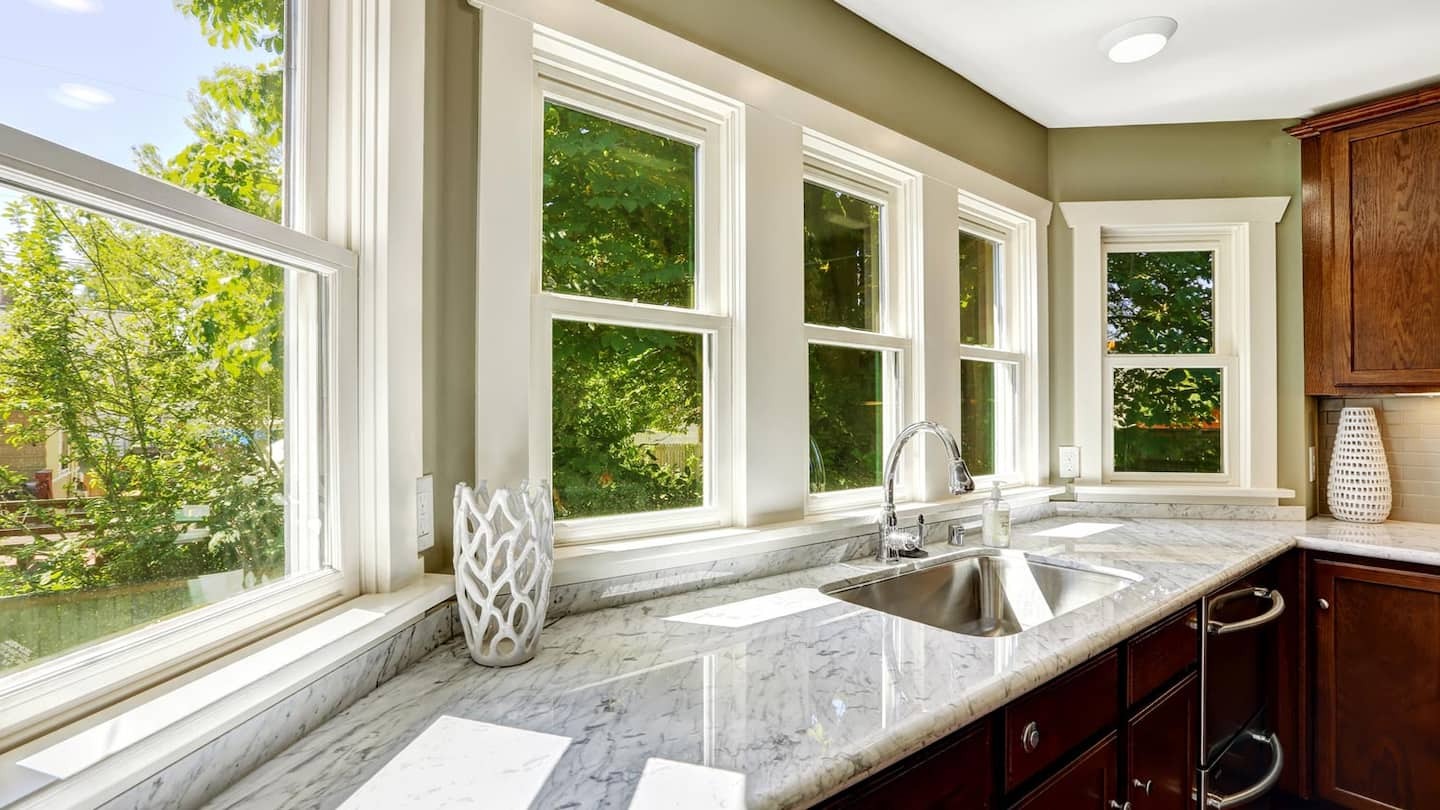Home>Furniture & Design>Interior Design Trends>How To Craft Tinted Glass


Interior Design Trends
How To Craft Tinted Glass
Modified: February 18, 2024
Discover the latest interior design trends with our guide on how to craft tinted glass, adding a modern touch to your space. Explore innovative techniques and ideas for incorporating this trend into your home.
(Many of the links in this article redirect to a specific reviewed product. Your purchase of these products through affiliate links helps to generate commission for Storables.com, at no extra cost. Learn more)
Introduction
Tinted glass is a versatile and stylish element that can elevate the aesthetic appeal of any space. Whether you're a design enthusiast or a homeowner looking to add a touch of sophistication to your interiors, crafting tinted glass can be a rewarding and creative endeavor. This unique material has the ability to transform ordinary windows, doors, and decorative pieces into captivating focal points, infusing the environment with a sense of elegance and modernity.
In recent years, tinted glass has gained popularity in interior design due to its ability to create a sense of privacy while allowing natural light to filter through. Its subtle translucency adds an air of mystery and allure to any room, making it a desirable choice for both residential and commercial spaces. With the right techniques and materials, you can easily customize tinted glass to complement your existing decor or serve as a striking standalone feature.
Crafting tinted glass is not only a creative outlet but also a practical way to enhance the ambiance of your living or working space. By understanding the process and investing in the necessary materials and tools, you can embark on a journey to transform plain glass into a captivating design element that reflects your personal style and vision. Whether you're drawn to the timeless allure of classic stained glass or the contemporary appeal of sleek, monochromatic tints, the possibilities for customization are endless.
In the following sections, we will delve into the intricacies of crafting tinted glass, providing a comprehensive guide that covers everything from understanding the nature of tinted glass to the step-by-step process of creating your own bespoke pieces. With a keen eye for detail and a passion for design, you can unlock the potential of tinted glass to enrich your surroundings and leave a lasting impression on anyone who experiences the beauty of your creations.
Key Takeaways:
- Crafting tinted glass is a creative and practical way to add elegance and privacy to any space. With the right materials and techniques, you can transform plain glass into captivating design elements that reflect your personal style.
- By mastering the step-by-step process and embracing precision, experimentation, and safety measures, you can elevate your tinted glass projects to new heights of creativity and sophistication, resulting in stunning and personalized design elements.
Understanding Tinted Glass
Tinted glass, also known as colored glass, is a type of decorative glass that has been treated with a colored film or coating to alter its visual properties. This process results in glass that is not only aesthetically pleasing but also functional, as it can provide privacy, reduce glare, and enhance the overall ambiance of a space. Tinted glass comes in a variety of hues, ranging from subtle earth tones to bold, vibrant colors, allowing for a wide range of design possibilities.
One of the key characteristics of tinted glass is its translucency, which allows light to pass through while adding a touch of color to the environment. This unique quality makes tinted glass an ideal choice for creating a sense of privacy without sacrificing natural light. Whether used in windows, doors, partitions, or decorative accents, tinted glass can effectively obscure the view from the outside while maintaining a bright and airy feel indoors.
In addition to its practical benefits, tinted glass also offers a myriad of design options. From traditional stained glass patterns to contemporary, minimalist designs, the versatility of tinted glass allows for endless customization. The interplay of light and color through tinted glass can create mesmerizing visual effects, casting enchanting hues and shadows that add depth and character to any space.
Furthermore, tinted glass can be utilized to evoke specific moods or themes within a room. Warm, earthy tones can infuse a space with a cozy, inviting atmosphere, while cooler shades can impart a sense of tranquility and sophistication. By carefully selecting the color and opacity of tinted glass, designers and homeowners can tailor the ambiance of a space to suit their preferences and aesthetic vision.
Understanding the nature of tinted glass is essential for harnessing its full potential in interior design. By appreciating its unique properties and the myriad of design possibilities it offers, one can explore innovative ways to incorporate tinted glass into various design projects, whether as a subtle accent or a striking focal point. With a keen understanding of tinted glass, one can embark on a creative journey to transform ordinary glass into captivating works of art that elevate the beauty and functionality of any interior space.
Materials and Tools Needed
Crafting tinted glass requires a selection of specialized materials and tools to ensure a successful and visually appealing outcome. Here's a comprehensive list of the essential items needed to embark on this creative endeavor:
Materials:
-
Clear Glass: The foundation of tinted glass crafting, clear glass serves as the base for applying tinting materials. It's important to choose high-quality, smooth-surfaced glass to achieve optimal results.
-
Glass Tinting Film or Paint: Depending on the desired effect, tinting film or paint in the preferred color and opacity is essential. Tinting film offers a convenient option for creating uniform tints, while tinting paint allows for more intricate designs and customization.
-
Glass Cleaner and Microfiber Cloth: Prior to applying the tinting film or paint, it's crucial to thoroughly clean the glass surface to ensure proper adhesion and a flawless finish.
-
Tape and Stencils: These tools are indispensable for creating precise patterns and designs on the glass. Stencils can be used to achieve intricate motifs, while tape helps in delineating specific areas for tinting.
-
Protective Gear: Safety should always be a priority when working with tinting materials. Protective gloves, goggles, and a respirator mask are essential for safeguarding against potential hazards during the crafting process.
Tools:
-
Utility Knife or Scissors: These tools are necessary for cutting tinting film to the desired dimensions and shapes, allowing for precise customization to fit the glass surface.
-
Squeegee or Tinting Tool: A squeegee aids in smoothing out the tinting film, ensuring a bubble-free application and a seamless, professional finish. Alternatively, a tinting tool can be used for the same purpose.
-
Spray Bottle: When using tinting paint, a spray bottle is useful for applying the paint evenly onto the glass surface, allowing for controlled coverage and blending.
-
Heat Gun or Hair Dryer: For tinting film application, a heat gun or hair dryer is employed to activate the adhesive and facilitate proper adherence to the glass.
-
Work Surface and Worktable: A clean, flat work surface and a sturdy worktable provide a stable and organized environment for tinting glass, allowing for precision and ease of application.
By gathering these materials and tools, you can set the stage for a successful tinted glass crafting project, enabling you to explore your creativity and bring your design visions to life.
Read more: How To Tint A Skylight
Step-by-Step Guide to Crafting Tinted Glass
Crafting tinted glass is a meticulous process that requires attention to detail and precision. By following a systematic approach, you can achieve stunning results that enhance the visual appeal of any space. Here's a comprehensive step-by-step guide to crafting tinted glass:
-
Prepare the Glass Surface: Begin by thoroughly cleaning the glass surface with a glass cleaner and a microfiber cloth to remove any dust, dirt, or residue. This step is crucial for ensuring proper adhesion of the tinting materials and achieving a flawless finish.
-
Select the Tinting Method: Depending on your design preferences, choose between tinting film or tinting paint. Tinting film offers a convenient option for creating uniform tints and patterns, while tinting paint allows for more intricate designs and customization.
-
Cut and Apply the Tinting Film or Paint: If using tinting film, carefully measure and cut the film to fit the dimensions of the glass surface. Apply the film using a squeegee to smooth out any air bubbles and ensure a seamless finish. For tinting paint, use a spray bottle to apply the paint evenly onto the glass, allowing for controlled coverage and blending.
-
Create Patterns and Designs: Utilize tape and stencils to create precise patterns and designs on the glass. Stencils can be used to achieve intricate motifs, while tape helps in delineating specific areas for tinting. This step allows for customization and adds a unique touch to the tinted glass.
-
Activate the Adhesive (For Tinting Film): If using tinting film, use a heat gun or hair dryer to activate the adhesive on the film. Apply heat evenly across the surface to ensure proper adherence to the glass, smoothing out any wrinkles or imperfections.
-
Allow for Drying and Curing: Once the tinting film or paint has been applied, allow the glass to dry and cure according to the manufacturer's instructions. This step is essential for ensuring the longevity and durability of the tinted finish.
-
Inspect and Touch Up: After the tinted glass has dried, carefully inspect the surface for any imperfections or areas that may require touch-ups. Address any irregularities to achieve a polished and professional result.
By following these step-by-step instructions, you can master the art of crafting tinted glass and unleash your creativity to transform plain glass into captivating design elements that elevate the ambiance of any interior space.
When crafting tinted glass, be sure to add a dye to the glass recipe in the crafting table. You can use any color dye to create different shades of tinted glass.
Tips and Tricks for Perfecting Tinted Glass
Perfecting the art of crafting tinted glass requires attention to detail, patience, and a keen understanding of the techniques involved. To ensure a flawless and professional finish, consider the following tips and tricks that can elevate your tinted glass projects to the next level:
-
Precision in Preparation: Prior to applying tinting film or paint, ensure that the glass surface is impeccably clean and free from any debris or smudges. Thoroughly cleaning the glass with a high-quality glass cleaner and a lint-free microfiber cloth is essential for achieving optimal adhesion and a seamless finish.
-
Careful Application: When applying tinting film, work methodically to avoid air bubbles and wrinkles. Using a squeegee, start from the center and gently push outwards to remove any trapped air and ensure a smooth, uniform application. For tinting paint, maintain a consistent spraying distance and overlap each pass slightly to achieve even coverage.
-
Experiment with Patterns and Textures: Embrace creativity by experimenting with various patterns, textures, and opacities to achieve unique and captivating effects. Whether it's geometric shapes, organic motifs, or abstract designs, the possibilities for customization are endless. Stencils and tape can be utilized to create precise boundaries and intricate details, adding depth and visual interest to the tinted glass.
-
Temperature and Humidity Control: When working with tinting film or paint, be mindful of the ambient temperature and humidity levels. Extreme temperatures and high humidity can affect the drying and curing process, potentially leading to uneven finishes or adhesion issues. Ideally, work in a controlled environment to optimize the application and drying of the tinting materials.
-
Attention to Detail: Take the time to inspect the tinted glass surface carefully after application. Address any imperfections, such as small air bubbles or uneven edges, by gently smoothing them out with a squeegee or applying additional tinting material as needed. This meticulous approach ensures a polished and professional result.
-
Protective Measures: Prioritize safety by wearing protective gear, including gloves, goggles, and a respirator mask, especially when working with tinting paint. Additionally, ensure proper ventilation in the workspace to minimize exposure to fumes and airborne particles.
-
Consult Manufacturer Guidelines: Always refer to the manufacturer's guidelines and recommendations for the specific tinting materials being used. Following the prescribed application, drying, and curing instructions is crucial for achieving a durable and long-lasting tinted finish.
By incorporating these tips and tricks into your tinted glass crafting process, you can elevate your projects to new heights of creativity and sophistication, resulting in stunning and personalized design elements that enrich the ambiance of any interior space.
Conclusion
In conclusion, the art of crafting tinted glass offers a captivating blend of creativity, functionality, and aesthetic allure. Through a meticulous process that involves precision, attention to detail, and a keen understanding of the materials and techniques involved, individuals can transform ordinary glass into bespoke design elements that elevate the ambiance of any interior space.
The versatility of tinted glass allows for a myriad of design possibilities, ranging from subtle, understated tints to bold, vibrant colors. Whether used in windows, doors, decorative panels, or custom art pieces, tinted glass has the power to infuse spaces with a sense of elegance, privacy, and visual intrigue. Its unique translucency enables the interplay of light and color, creating mesmerizing visual effects that add depth and character to any environment.
By mastering the step-by-step process of crafting tinted glass, individuals can unleash their creativity and bring their design visions to life. From meticulous surface preparation to the careful application of tinting materials, each stage of the crafting process contributes to the creation of flawless and professional results. Embracing precision, experimenting with patterns and textures, and prioritizing safety and attention to detail are essential elements in perfecting the art of tinted glass crafting.
Furthermore, the tips and tricks provided offer valuable insights for achieving exceptional outcomes, guiding individuals in navigating the nuances of tinted glass crafting with confidence and expertise. By embracing these recommendations, individuals can elevate their projects to new heights of creativity and sophistication, resulting in stunning and personalized design elements that enrich the ambiance of any interior space.
In essence, crafting tinted glass is not only a creative pursuit but also a means of personal expression and design innovation. Whether seeking to add a touch of modernity to a residential space or infuse a commercial environment with a sense of sophistication, tinted glass serves as a versatile and timeless medium for artistic exploration. By understanding the nature of tinted glass and harnessing its potential, individuals can embark on a journey to transform plain glass into captivating works of art that leave a lasting impression on anyone who experiences the beauty of their creations.
Frequently Asked Questions about How To Craft Tinted Glass
Was this page helpful?
At Storables.com, we guarantee accurate and reliable information. Our content, validated by Expert Board Contributors, is crafted following stringent Editorial Policies. We're committed to providing you with well-researched, expert-backed insights for all your informational needs.















0 thoughts on “How To Craft Tinted Glass”